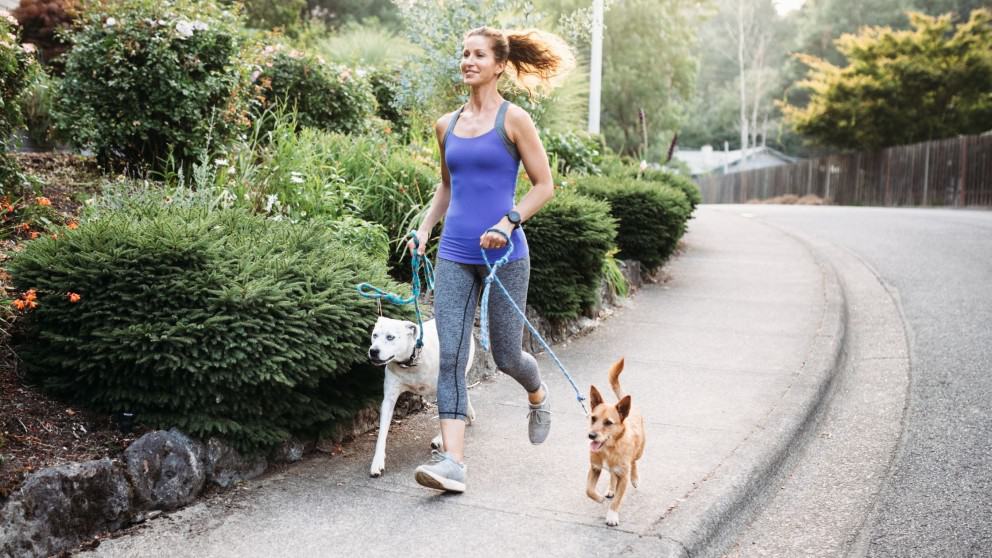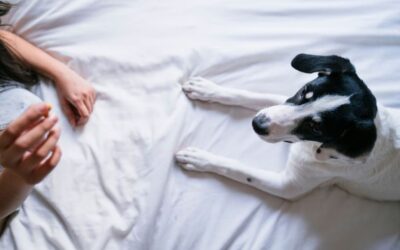Easy Dog Weight Loss Program to Start Today

As we well know, humans have good and bad habits and these habits tend to rub off on those closest to us, including our furry friends. Healthy habits can include things like a love for hiking, eating nutritious meals, and walking on the beach. But these can easily be overpowered by bad habits such as overeating or not getting in the minimum amount of daily physical exercise. All of these bad habits tend to lead to one thing, OBESITY, even in dogs. While we may think those extra pounds can’t be that bad, they can lead to some serious health problems and should not be taken lightly. Obesity can lead to many health problems including reduced energy, immobility and stiffness, and worsened overall mood. As humans, we understand the severity obesity takes on our own lives and as pet owners, it’s our responsibility to keep our dogs happy and healthy.
Know Your Dog’s Healthy Weight
This may sound like a common thing to know, but different breeds and ages have different healthy weight ranges. This first step in making sure your dog is at his or her healthy weight is to truly understand what their ideal weight is. You can determine your dog’s Body Condition Score by comparing him or her to the chart below:

Image courtesy WORLD SMALL ANIMAL VETERINARY ASSOCIATION (WSAVA)
The AKC Breed Standards is also a great resource to reference and can help determine your dog’s ideal weight. If you believe that your dog’s weight greatly varies from the Body Condition Score chart or the AKC Breed Standard, it’s time to consult with your trusted vet. While it’s always a good idea to get a professional opinion if you’re unsure, their advice can help you determine your dog’s body condition, accurate weight, and create a personalized diet.
How to help a dog lose weight
What are the two things most people start doing when they begin a weight loss journey? Well if you’re like most humans you would probably mention either exercise and/or dieting. Just like us dogs are extremely similar when it comes to weight loss.
Exercise is crucial when trying to get your pet’s weight down to its standard weight range. Unlike humans your dog can’t just hop on the treadmill or bike to crank out some cardio for an hour. Instead the main goal should be to increase your dog’s daily activity in anyway possible. All you are really trying to do is burn off your pet’s energy, thus burning off calories that have been consumed. Regular walks, running and playing in a safe environment, or even stimulating indoor activities are all great ways to keep your dog moving. Just remember, different breeds do need different amounts of exercise, therefore when consulting with your trusted vet be sure to ask how much exercise/activity your dog truly needs.
Another crucial action to take in your dog’s weight loss journey is maintaining a balanced diet for them. Later in this article we will go into more detail about the diet itself but there are a few things you can do to kickstart the process. First, limit the table scraps. We have all fell victim to this at the dinner table when our dogs start to beg. Those cute faces are tough to not give into but eliminating table scraps can be one of the easiest and effective ways to help your pet’s battle with obesity. This also applies to treats. Be conscious of the amount of treats you are giving your dog on a daily basis; those calories count toward their daily intake. If you use treats for training, a low-calorie, low-fat substitute is a great option. Clickers can also be a great alternative to treats when training your pet (plus they have zero calories!). These are two simple steps that you can take right away that will help drastically with your pets’ diets.
How quickly should I introduce the new reducing diet to my dog?
When introducing a new diet plan and food to your dog, gradual progress is key. You can best monitor the plan by creating a schedule and making sure everyone in the household is on board.
- The first thing you should schedule are regular weigh-ins in order to track the progress your pet is making. When incorporating this diet, you want to recheck weight about every two weeks.
- Next, schedule feeding times at the same time every single day. Place a little check box next to the time so whoever is responsible for feeding the dog can make sure they haven’t been overfed or underfed.
- Once the schedule has been set, dedicate a measuring cup for your pet’s food so everyone can easily calculate how much your dog is receiving each meal. This is typically done with assistance from your trusted vet but there are several equations that can be found online. Remember that those treats and scraps from the table count as calories for your pet!
- If switching the food brand, start by mixing the old dog food with the new food for about a week so your dog’s stomach can adjust to the new content.
Ideally, your dog should be losing between .5%-1.0% of his starting body weight per week. If you see that he is losing weight at a faster rate, check with your vet to see if you need to increase your dog’s calorie content. Same goes if your dog is not losing this weight; you will also want to make adjustments to the caloric intake your dog is consuming.
Introducing dogs to increased levels of dog exercise gradually
Let us now take a more detailed look at the exercise aspect of your dog’s weight loss plan. You should aim for about 30 minutes to an hour of exercise per day depending on your dog’s current activity levels. Aim to exercise your dog during the cooler hours of the day (mornings & evenings), allowing for more quality exercise without worrying about your pup overheating.
If this is one of your first times exercising your dog regularly, then you’ll want to start easy.
- Stay close to home in case your dog cannot handle the full 30 minutes.
- Stick to flat roads at first and add in inclines/declines as your dog becomes more accustomed to the daily activity. Heavy inclines can put a strain on your dog’s legs if they haven’t been exercising regularly. Eventually, introducing inclines will help your dog burn even more calories and build muscle.
If your dog is already getting this type of controlled exercise, then you want to increase the time spent exercising by about 25 percent. Try a dog agility class if you’re up for a good challenge. Dog agility training can improve communication skills, provide mental stimulation, and create a stronger bond with your furry pal.
Types of Exercise for Obese Dogs
One of the most important things to remember when exercising your dog is to make sure it is enjoyable for them. Just like us humans, dogs need to be excited to work out and they will find a lot of enjoyment from doing so long term. With dogs, variety is key. While walking and jogging are great ways to promote weight loss, adding in a change of scenery or activity will be welcomed. Some different activities to try could include:
- Fetch
- Hill work
- Hiking
- Swimming (our golden’s favorite activity)
- Running up and down stairs
- Hide-and-Seek
- Tug a war
- Agility training
- Play dates with other dogs of the same size
- Obedience class (it’s a double whammy).
Get the right insurance plan to keep your pet as healthy as possible. Explore the options today!
How often should you be taking your pet to the vet? Read more here.



